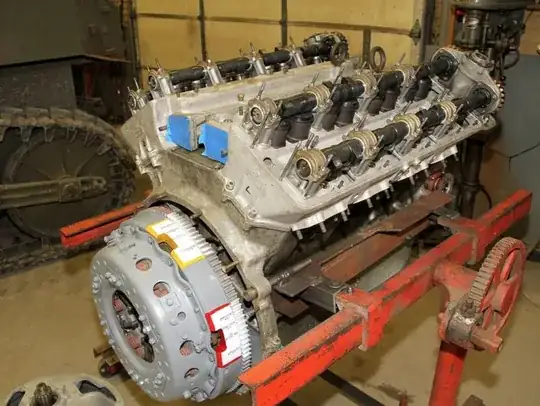Per @Eric Urban's suggestion,
I found the Technical Manual for the M4A3 tank published in 1942. That tank did use the aluminum Ford GAA 18L V8 engine which produces 500 hp at 2600 RPM!
It says:
Capacity: 32 Quarts
Above 32°: SAE 30
32° to 10°: SAE 30 or 10
10° to -10°: SAE 10
Below -10° : Not Listed
Replace the oil every 50 hours or 500 miles on dirt roads or 1000 miles on paved roads. (These are miles in a tank.)
Clean the oil filter every 1000 miles.
I believe @user23543 has a point that oil formulations have changed over the years.
In 1942, the SAE J300 standard was much different. It was only concerned with one viscosity and tested that in a much different way than today. They used a different test apparatus and different temperatures.
Some say, "the minimum standards for each grade have only become more
demanding [over the years]". That's a good general rule, but it's not that simple.
SAE J300 started out measuring just one viscosity of the oil with a "crude" apparatus. Nowadays, SAE J300 prescribes the grades by listing the viscosity under several different conditions.
Today's oils are probably overall better than back then, but since we do not know the other viscosity numbers from back then, we cannot make a full comparison.
I have been unable to find the revision year of SAE J300 that was applicable in 1942. I have also been unable to obtain a copy of the original SAE J300 standard published in 1911.
The original SAE J300 compared all oils the same; it did not break "oils" up into the various categories we have today.
Illustrative points:
Prior to 1947, oil was not divided into Regular Type (mineral oil), Premium Type, and Heavy-Duty Type (contains detergents). (source)
Prior to 1952, oil was not divided into gasoline and diesel engine categories. Even then, that was part of the API standard, not SAE J300. (source)
In 1952, SAE added the winter ("W") grade. (source)
The viscosity of SAE 30 back then and the viscosity of SAE 30 now are similar, but not identical.
I have no information on any of the other properties that we take note of today from the oil back then.
SAE 30 is a good starting point though.
